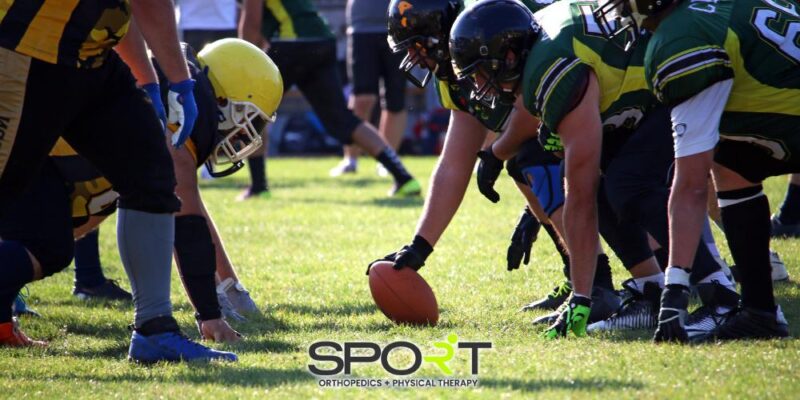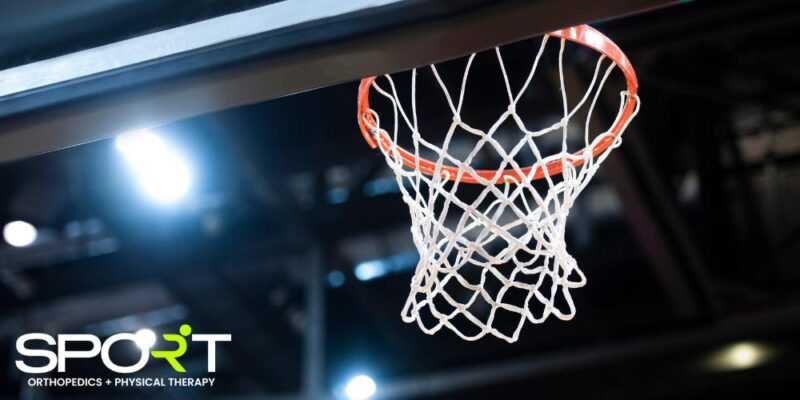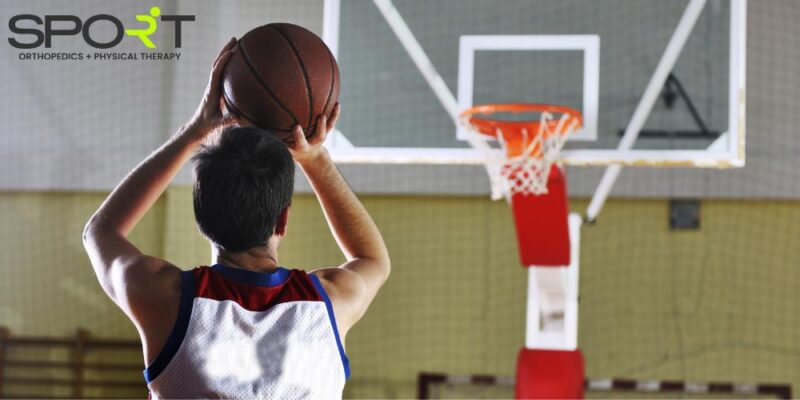

Table of Contents
In case you have never tried D1 Sports Training, you'll soon realize that this is different from anything else you've done. D1 is short for Division 1. A Division 1 college team is the highest level of college athletics, as sanctioned by the National Collegiate Athletic Association (NCAA). So what is D1 sports training?
D1 Sports Training is for children and adults who wish to train at the highest level. A top-notch rehab center is also available to assist athletes in quickly returning to the playing field, court, or track with full strength and mobility.
You can choose from a variety of children's and adult training offerings and levels of membership. This gives you lots of options for your child's or your own health and sports goals. A sports medicine doctor Dallas explains everything you need to know about Division 1 sports and D1 Sports Training so you can determine if this is the fitness program for you.
Division I schools and athletics are under the auspices of The National Collegiate Athletic Association (NCAA). So, what are NCAA sports?
It's a member-driven national association that promotes learning through the combination of college sports and higher education. Throughout their college experience, student athletes receive support to excel in the classroom, on the field, and beyond.
The NCAA is made up of member institutions, mostly schools, and universities, and there are also conferences and other related entities. Within its more than 100 athletic conferences, over 1,000 universities with almost 500,000 student-athletes compete.
Members of the NCAA develop rules to make sure all competitions are safe and fair, organize national championships, and strive toward the long-term aim of collegiate achievement. Often these competitions include headcount sports such as football, basketball, and gymnastics that are big money makers for the universities. They’re called headcount sports because there are a limited number of athletic scholarships available per team.
Division I, Division II, and Division III are the three divisions of play in the NCAA.

D1 is short for Division I. D1 is considered the most competitive category, with the best athletes and teams. Participating in a D1 sport takes a great deal of commitment and includes travel, off-season practices, and even weekend obligations.
NCAA Division I schools are typically those that carry recognition in the general public.
D1 colleges usually attract the greatest student athletes in college sports and are the first choice for student-athletes who want to pursue their sport professionally. D1 colleges are, on average, the nation's largest universities with the highest enrollment.
A D1 institution has a median undergraduate enrollment of 8,960 students, which is more than five times that of a D3 school, which has 1,740 students. D1 colleges have the most athletic scholarships, have the largest budgets, and offer a wide range of sports.
However, while most D I institutions offer more college sports scholarships than their D II and D III counterparts, the Ivy League schools, which are Division 1, are an exception. There are no athletic (or academic) scholarships available at these schools.
Division I is also broken down into the subcategories of Division I A and Division I AA. This is simply a scholarships division and a way to differentiate when scholarships are awarded. Schools in Division I A are free to offer an athletic scholarship whenever they wish. The bigger the school, the sooner they make an offer, and the less they care if rival universities or a scout publicizes it.
On the other hand, Division I AA institutions hold out until later in the process. This is because the sooner they make an offer, the more likely a Division I A institution will try to entice the student athlete with an athletic scholarship.
Though they all compete for the same title, Division 1 programs are divided into two levels (with the exception of football). The SEC, ACC, Big 12, PAC 12, and Big 10 are the five major Division 1 conferences, with the SEC, ACC, Big 12, PAC 12, and Big 10 being the most prominent. These institutions make up about a quarter of the Division 1 student body. And while there are many household names in Division 1 sports, many institutions have never been featured on television.
So what are the differences between D1 D2 and D3 schools?

These are usually the big colleges with huge athletic budgets and the most revenue-generating sports teams. This is the most competitive division. Division I institutions are the football bowl subdivision schools and compete in March Madness.
These colleges offer athletic scholarships that pay fully for tuition, room and board, books, dining plans, and other expenses. Coaches who work at this level earn a good salary and are known for their quality coaching. These programs are also known for having a lot of well-paid assistant coaches on staff.
Institutions that are part of Division 1 must promote at least seven sports - men's and women's - (or six men's and eight women's sports), as well as two team sports for each gender. Each gender must also be represented during each playing season.
NCAA rules also state that Division I schools must meet minimum attendance requirements. This includes an average actual or paid attendance at all home football games of at least 15,000 over the span of two years.
Among the ranks of D1 colleges are familiar names such as the University of Alabama, Louisiana State University, Michigan State University, Duke, and Brigham Young. Texas is also home to some big names - University of Texas, Baylor University, Texas Tech, and Texas A&M - just to name a few.
D2 colleges require less commitment than D1 schools. Their athletic departments, like other academic departments on campus, are funded through the institution's budget. D2 schools are typically mid-sized, with a median enrollment of 2,428 students and one athlete for every ten students.
Division 2 features some notable teams and players, but the schools are smaller and have smaller budgets. Student-athletes can receive full or partial scholarships, which are commonly combined with financial aid and need-based grants to help pay for education. There are a lot of good coaches at this level, but there aren't as many assistants.
These schools must sponsor at least five men's and women's sports (or four men's and six women's sports), with two team sports for each gender such as men’s and women’s basketball. This is with each playing season represented by each gender. Student athletes in Division II have a more well-rounded college experience because their athletic and academic obligations are more balanced.
D2 schools include Shorter, Bellarmine, and Eastern New Mexico universities, along with Tarleton State and Angelo State located in Texas.
D3 refers to a variety of educational institutions ranging in enrollment from more than 25,000 students to just over 400. This category also has the most schools and the highest percentage of pupils that participate in sports.
Division III athletics are funded similarly to other departments at colleges, and students do not earn scholarships based on their athletic abilities. These schools have fairly low academic budgets that are often not much higher than those of high schools.
Many of the schools have younger coaches gaining experience. However, many of the coaches are older and have been working at the school for a long time. These sports programs do not have many assistant coaches, and often they are volunteers.
At least five sports for men and five for women must be promoted at D3 schools, along with two team sports for each gender. In addition, the playing season is represented by both male and female teams.
D3 schools include DePauw and Carnegie Mellon universities, along with East Texas Baptist University and the University of Dallas.
The NCAA's three divisions help to ensure uniformity and a level playing field in college sports. For example, it's only fair that a massive state university like UCLA, with over 30,000 undergraduates and vast resources, competes against schools that invest similarly in sports and have athletes of comparable abilities.
The NCAA divisions also allow small schools (and institutions with limited resources) to compete for national titles. Athletes of varying skills can also compete at the college level thanks to the system.
DI athletes are athletes that play at a Division 1 school, which are typically the bigger, more well-known schools. To play at this level takes a lot of hard work and a great time commitment. In fact, so much time is spent practicing or playing at this level, it’s almost a full-time job in some cases.
This is where D1 sports training comes into the picture. It offers an opportunity for aspiring D1 athletes to get the intense training they would receive at the university level for their respective sports.
D1 Sports Training is designed for children and adults who want to get the most out of their athletic training.
Professional athletes, those who wish to train like professional athletes, and people who want to be collegiate or professional athletes use these gyms. They’re also geared toward former athletes and anyone else who wants to train at a high level.

There are a variety of programs available for both children and adults. Children ages 7 to 18 can participate in an age- and level-appropriate program. Programs help them either lay the groundwork for future athletic success or advance to the next level. They also work on character development and teamwork.
Adult boot camps and strength-training programs are available for all fitness and strength levels. Trainers are also available for one-on-one or small groups. Each member gets an individualized training plan.
D1 training facilities are collegiate-level with highly credentialed trainers. The sports medicine expertise on hand allows D1 athletes to achieve success and advance to the next level.
D1 was started and designed to train middle and high school athletes at a Division 1 level. It’s like having a tutor in sports - helping the student make the team and gain confidence. Or just to push them up to the next level.

No matter who is being coached, each member of a D1 facility is treated like an elite athlete.
The concept of periodization is used to create workouts, which means a D1 coaching panel creates routines that last for 5 to 8 weeks. Each week is designed to build on the previous week in order to reach measurable objectives. Coaches don't simply repeat pre-planned sets and reps. Instead, they use their knowledge and experience to adapt workouts for participants in real time. Particularly if someone is injured or joins after a workout period has begun.
Boot camps are divided into four 12-minute segments. The segments include a dynamic warm-up, a performance phase (circuits, HIIT style), core and conditioning, and recovery and stretching cooldown. Workouts are adjusted as needed and include adaptations for those who need them.
D1 also provides strength sessions that focus more heavily on bodybuilding and other specialized development areas. These include plyometrics and core and flexibility. Fast-twitch training is for individuals who like more weights and a little less cardio.
Different types of training are provided for children, adults, and professional athletes.
There's everything you'd expect from a college gym at a D1 training facility. AstroTurf fields, a weight room, a lounge, music, and medicine balls were thrown in a high-intensity environment are among the facilities. A top-notch rehab center is also available to aid athletes in quickly recovering to full strength and mobility.
At SPORT Orthopedics + Physical Training, our experienced Dallas and Frisco orthopedic doctors and physical therapists are dedicated to getting you back in the game. Whether you need treatment for runner's knee, shin splints, tennis elbow, or swimmer's shoulder, we can help. We take pride in helping our clients heal speedily and completely. Give us a call today at 469-200-2832 or complete our online intake form to get on track with your healing.













*We accept most all insurance plans, if you do not see your plan listed above or have any questions, please contact our office.

SPORT Orthopedics + Physical
Therapy – Dallas, TX
Services:
• Clinic • Orthopedic • Urgent Care
• Physical Therapy
18152 Preston Road
Suite I-2
Dallas, TX 75252
Phone: (469) 200-2832
Fax: (469) 269-1074
SPORT Orthopedics + Physical Therapy – Frisco, TX
Services:
• Clinic • Orthopedic • Urgent Care
• Physical Therapy
9255 Dallas Parkway
Suite I20
Frisco, TX 75033
Phone: (469) 200-2832
Fax: (469) 269-1074
SPORT Orthopedics + Physical
Therapy – Wylie, TX
Services:
• Clinic • Orthopedic • Urgent Care
• Physical Therapy
3400 FM 544
Suite 650
Wylie, TX 75098
Phone: (469) 200-2832
Fax: (469) 269-1074
SPORT Physical
Therapy – Prosper, TX
Services:
• Physical Therapy
790 N Preston Rd
Suite 60
Prosper, TX 75078
Phone: (469) 850-0201
Fax: (469) 269-1074
SPORT Orthopedics – Mesquite, TX
Services:
• Clinic
• Orthopedic
• Urgent Care
1102 North Galloway Ave
Mesquite, TX 75149
Phone: (469) 200-2832
Fax: (469) 269-1074